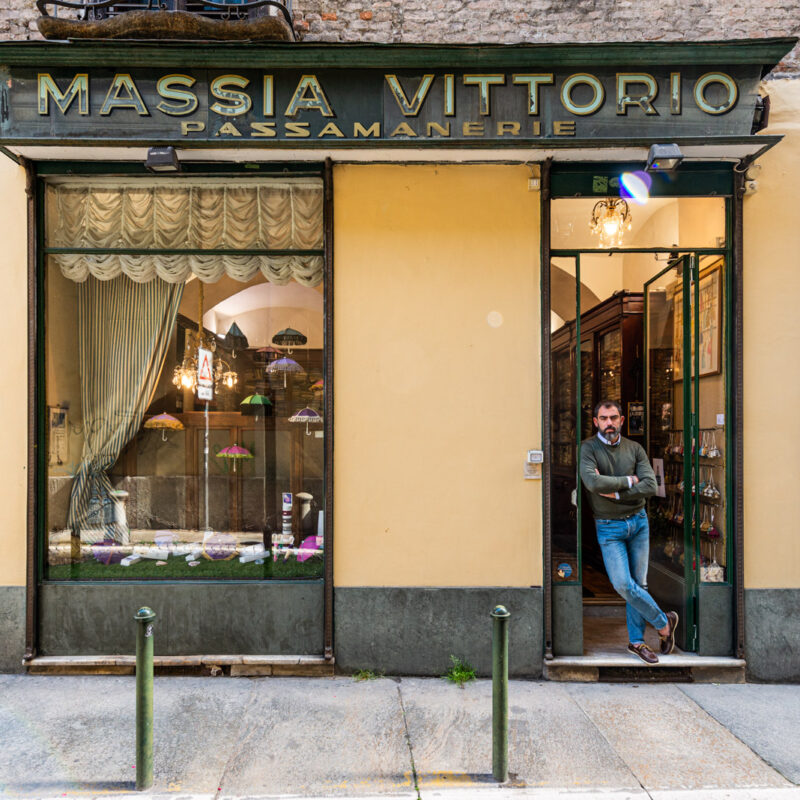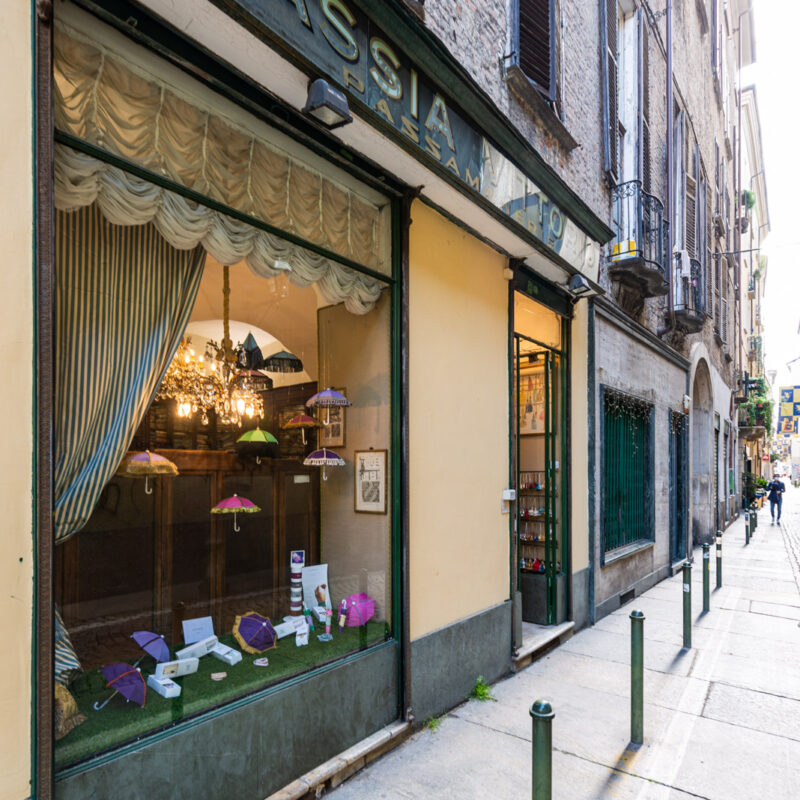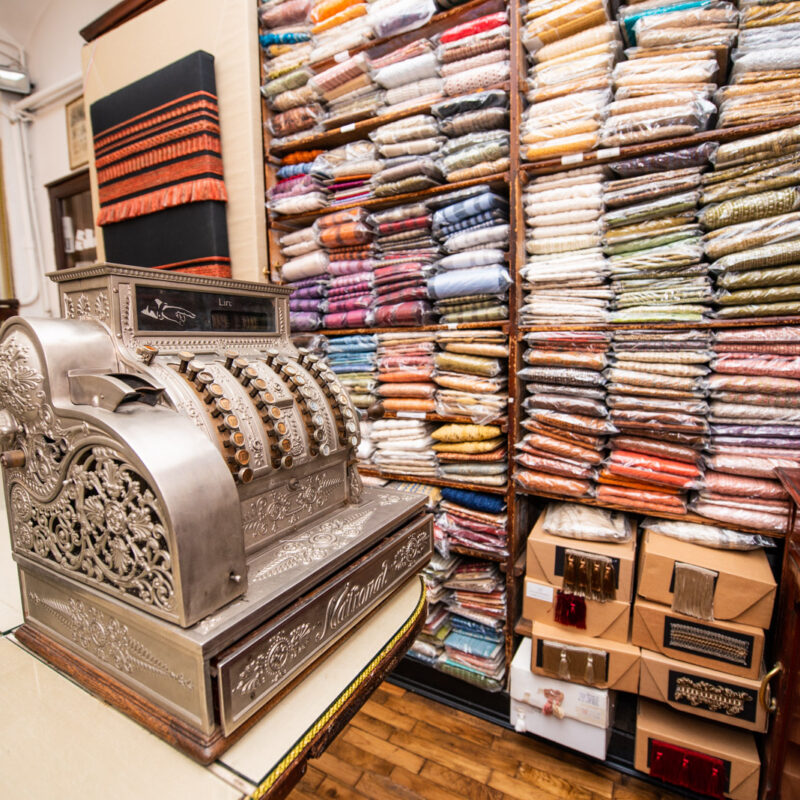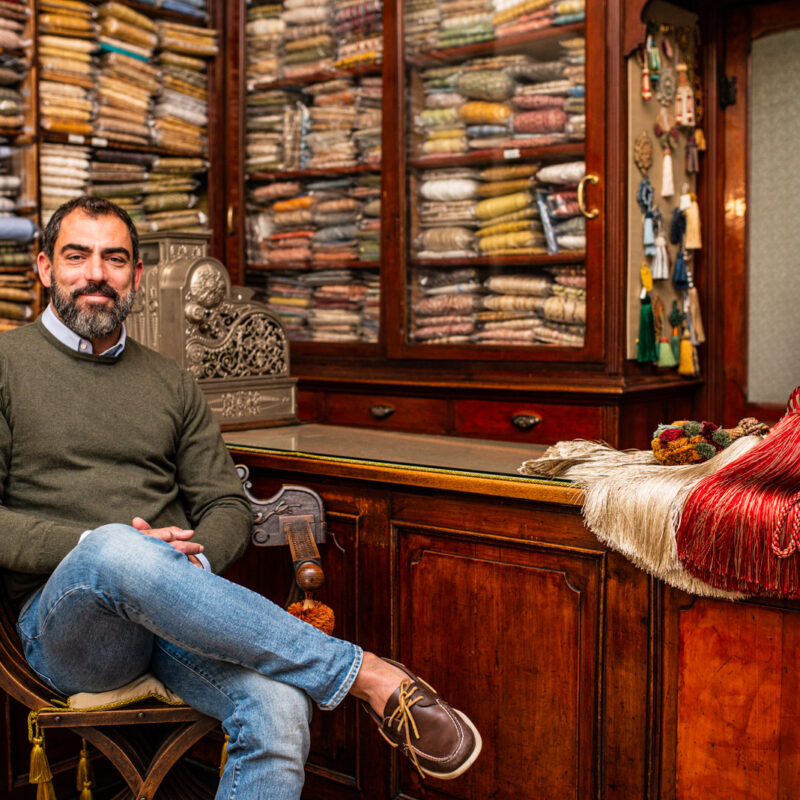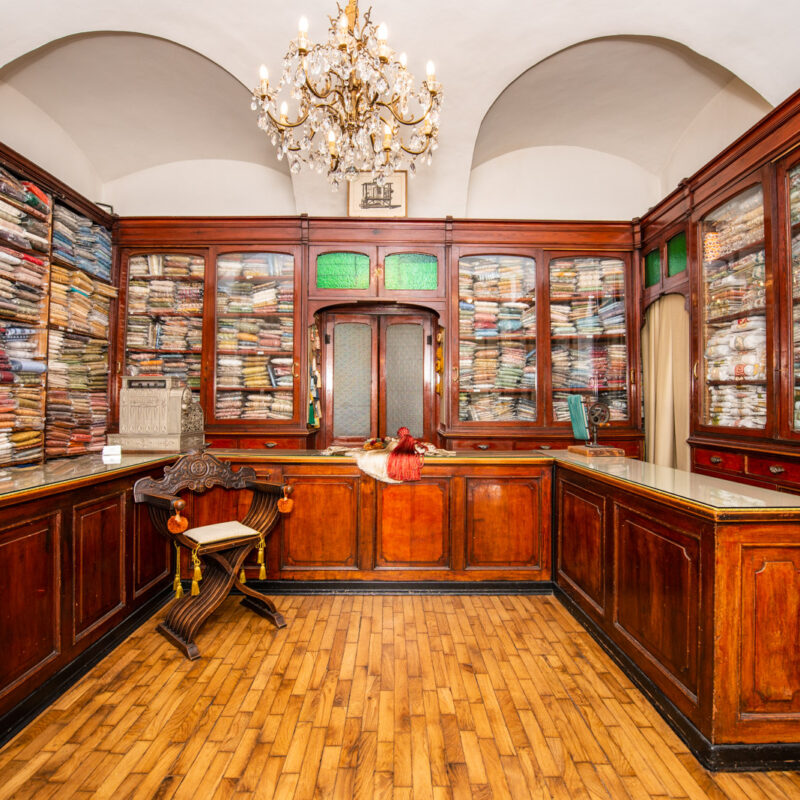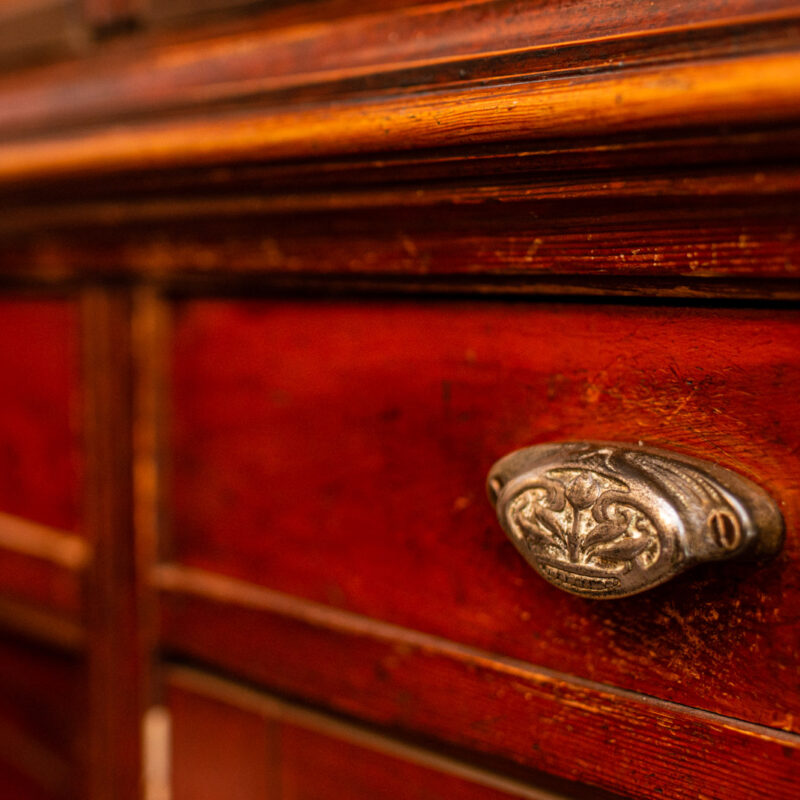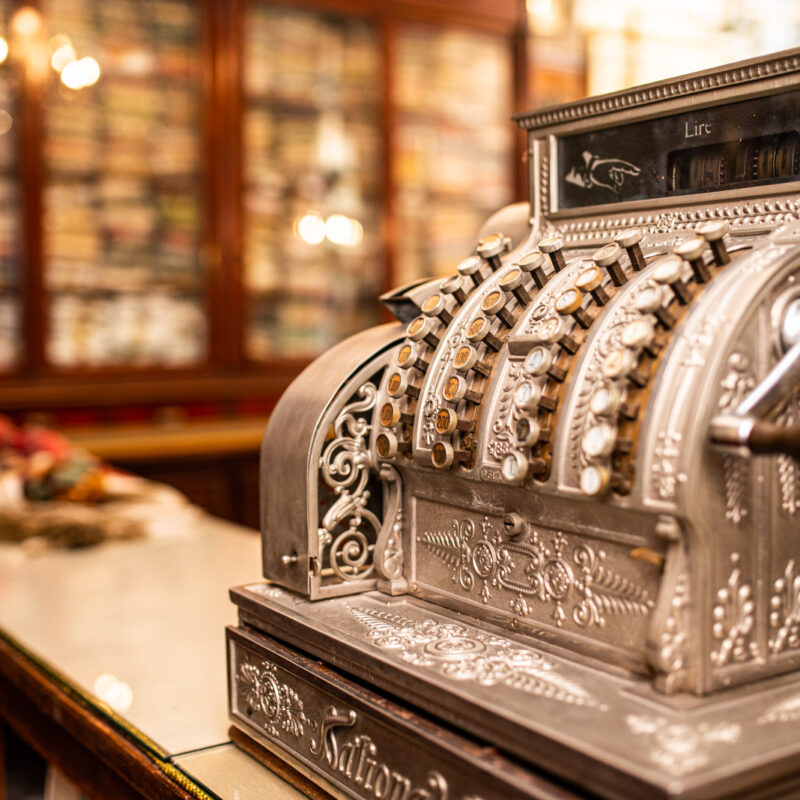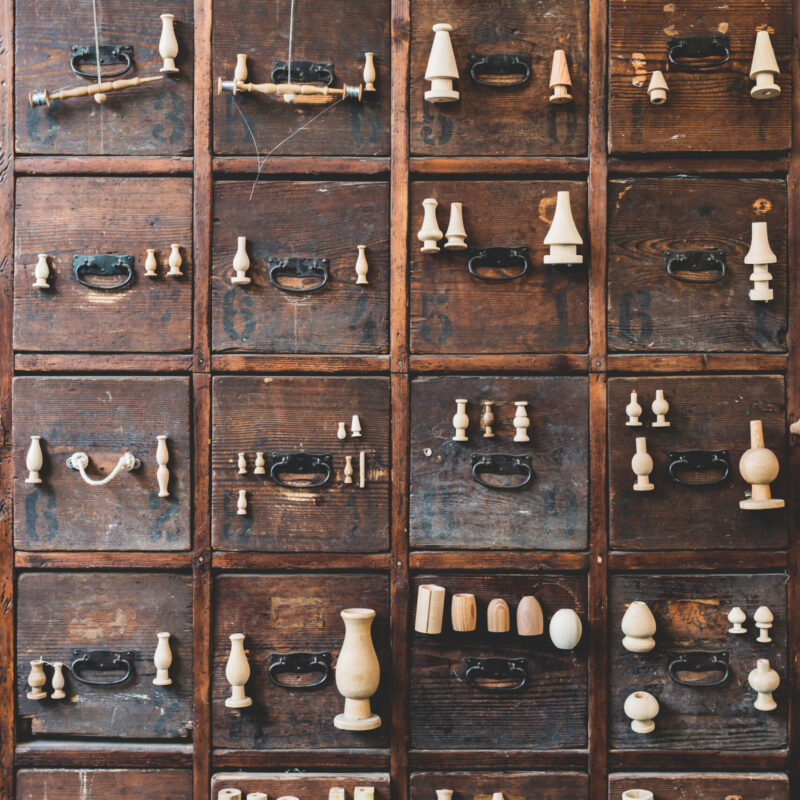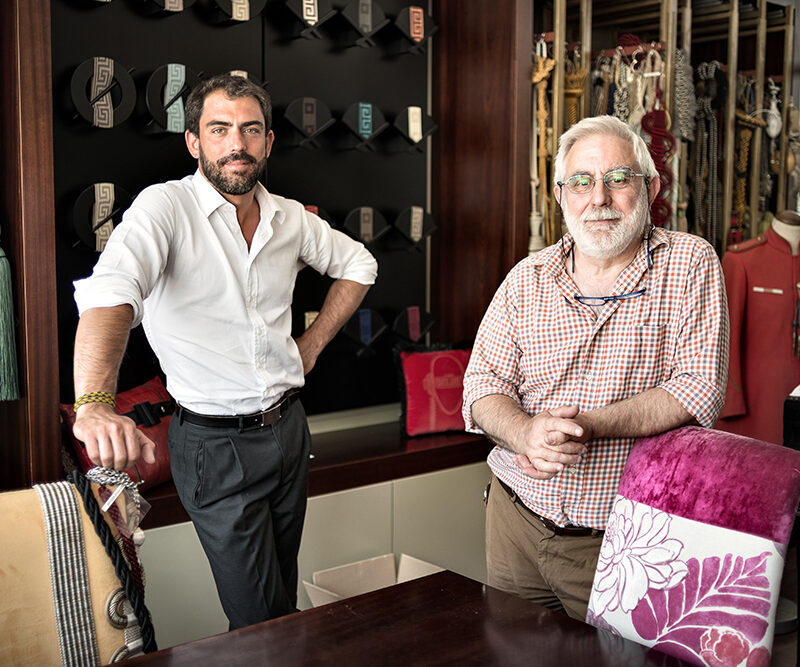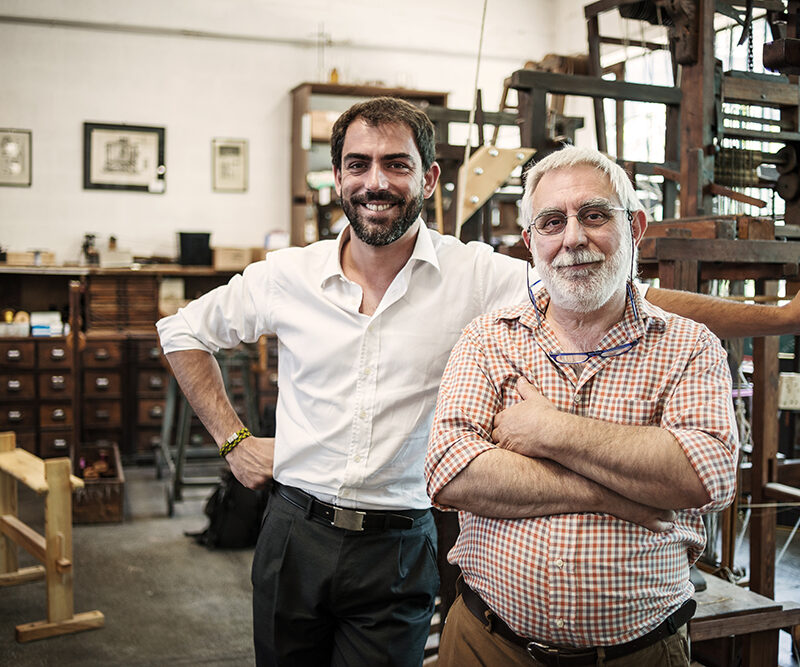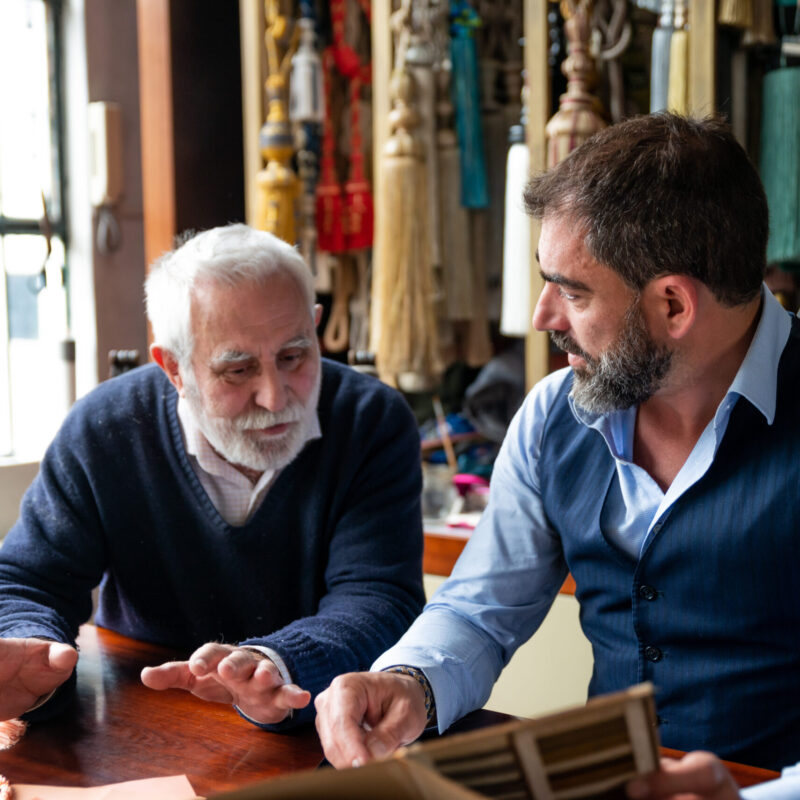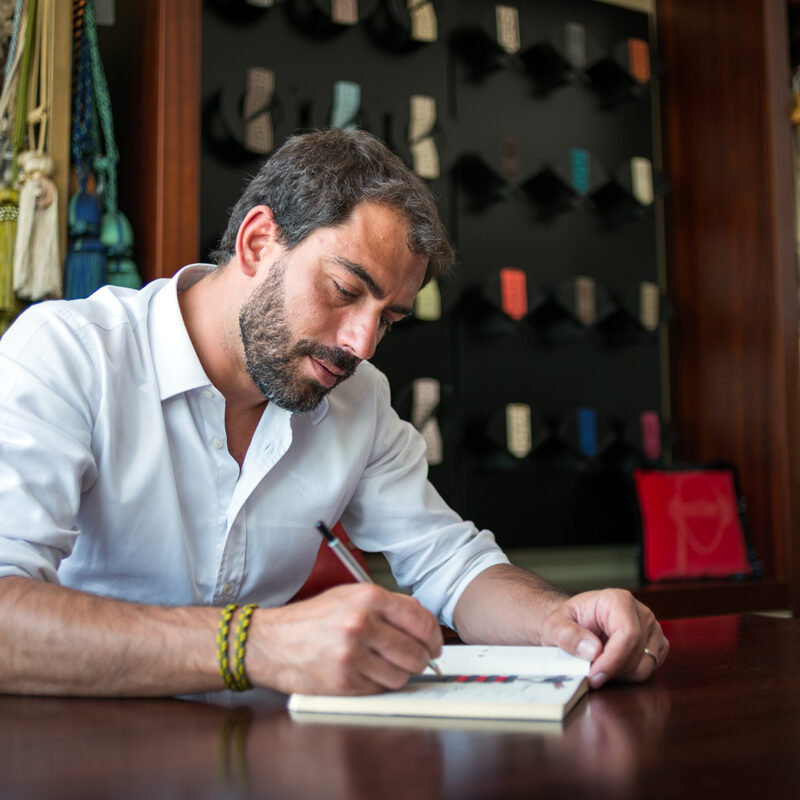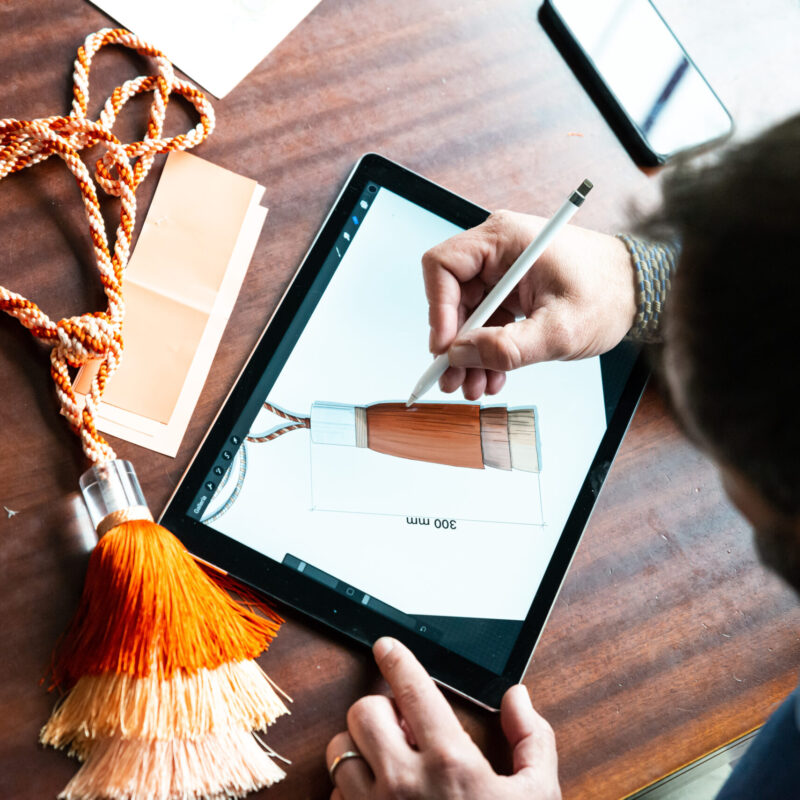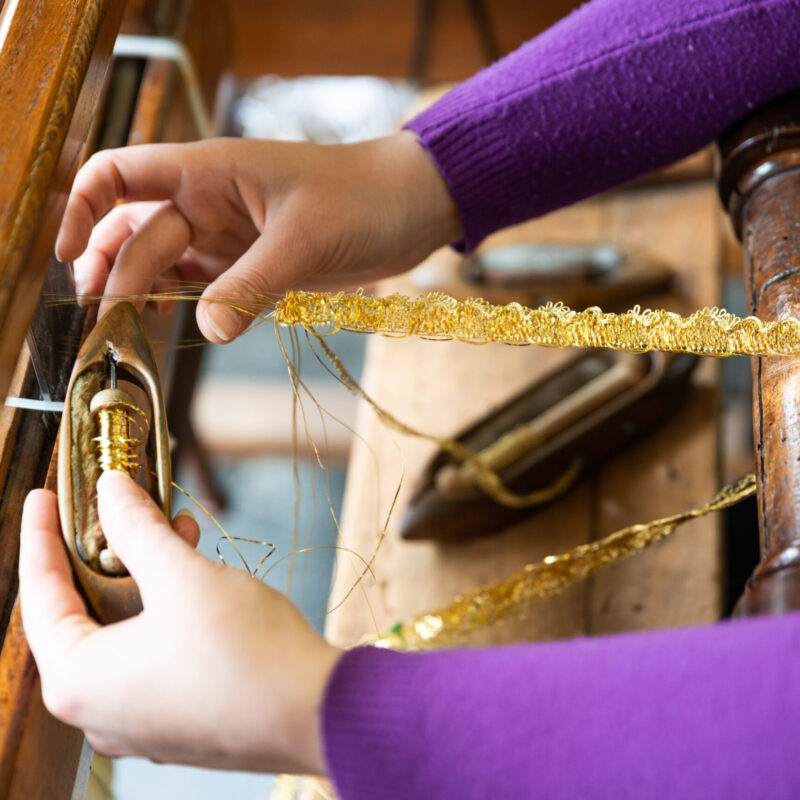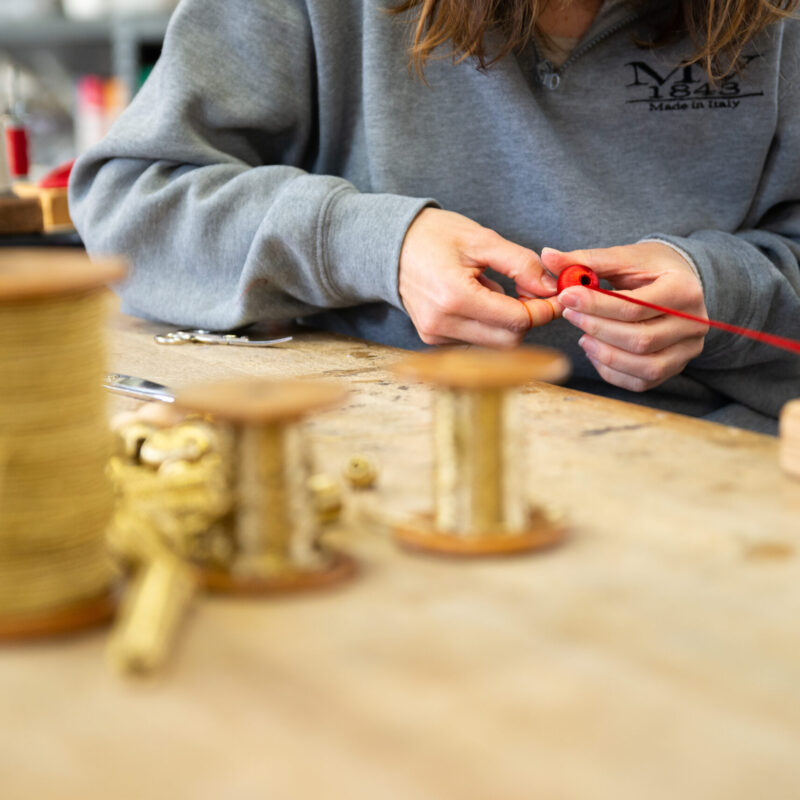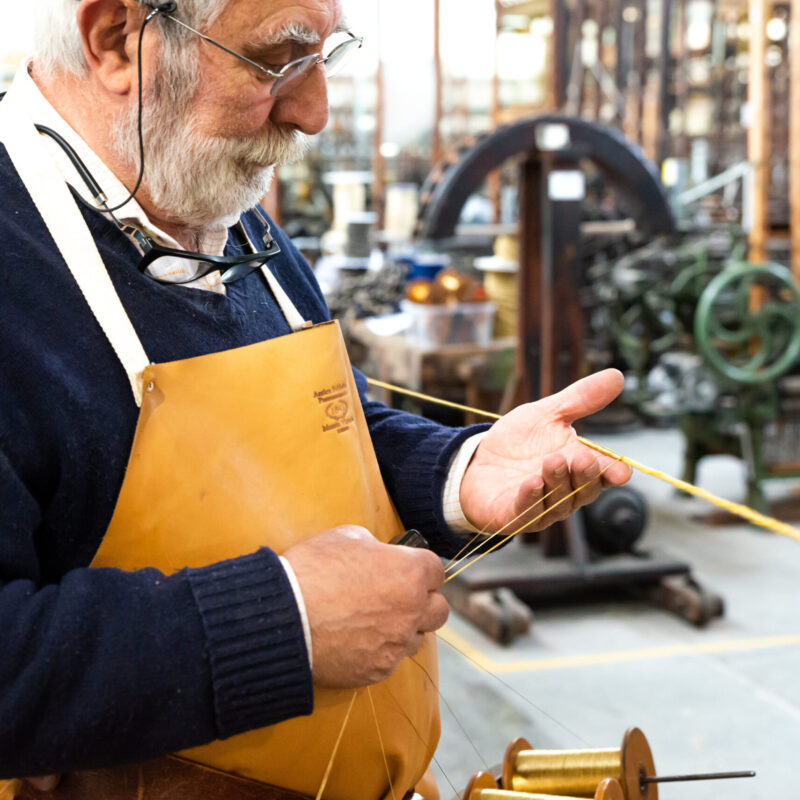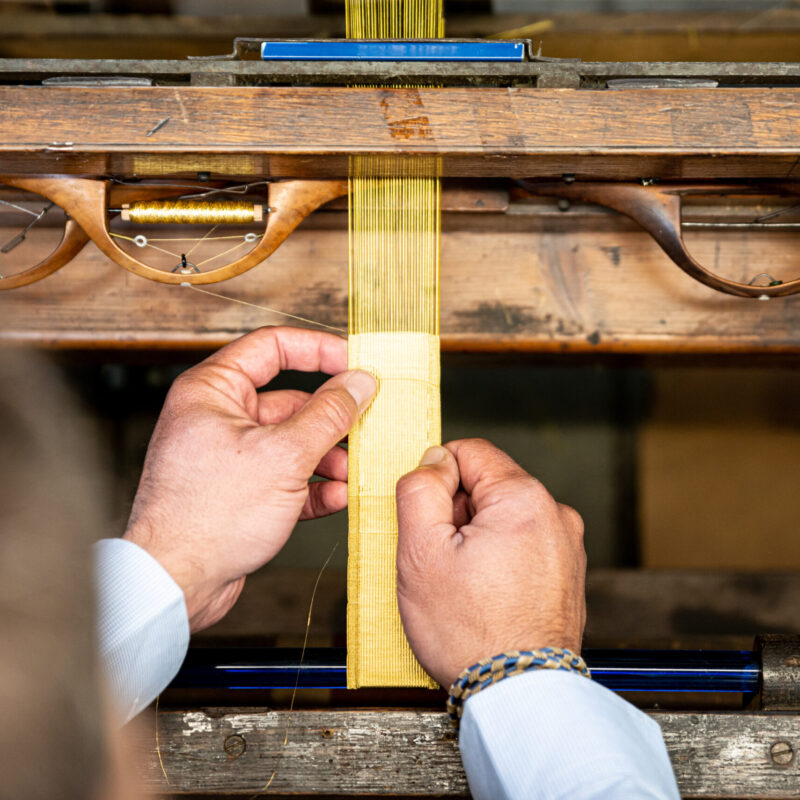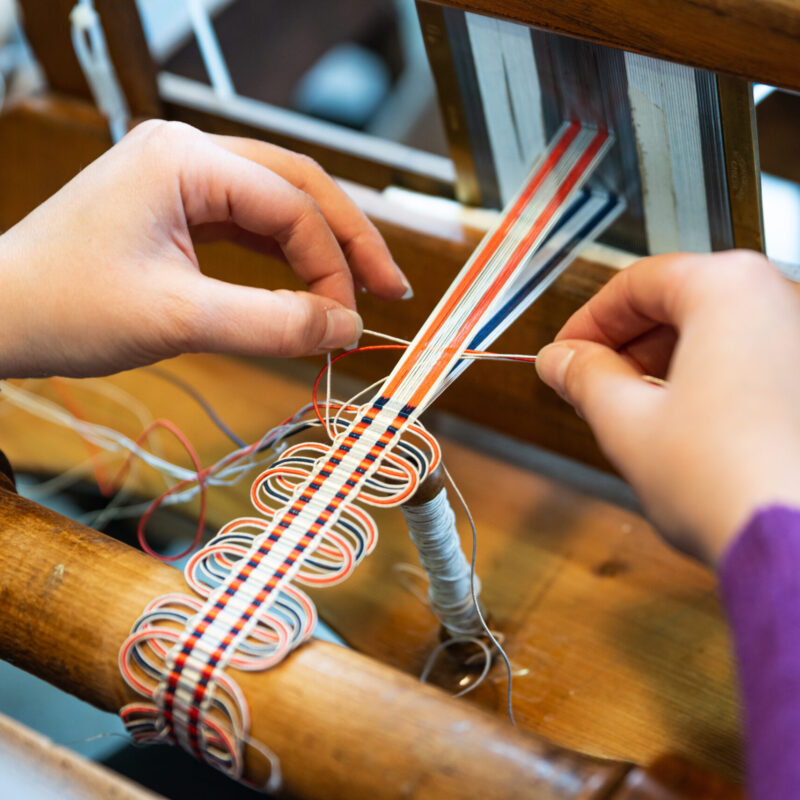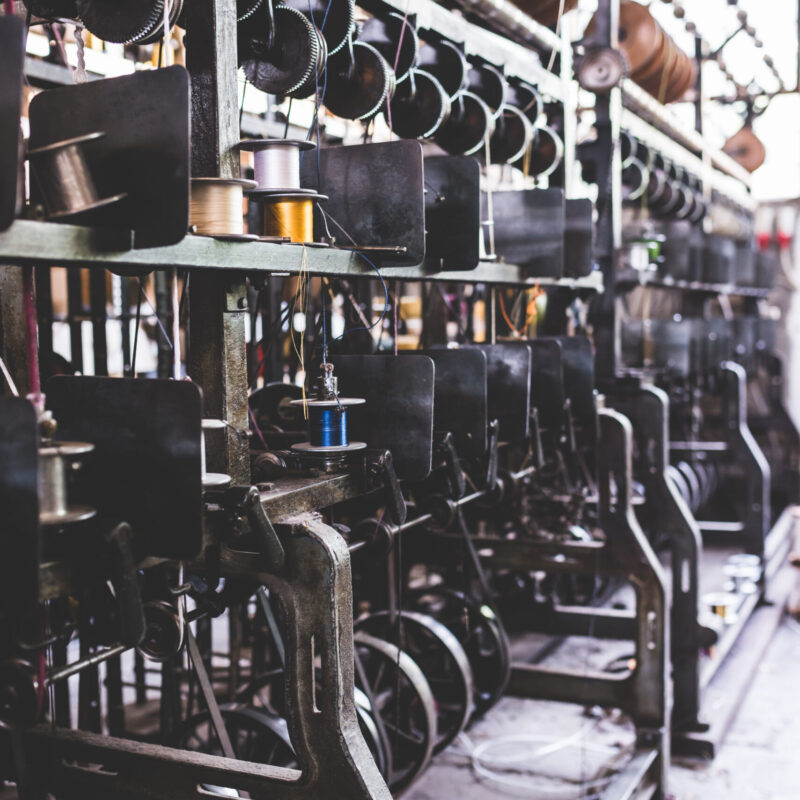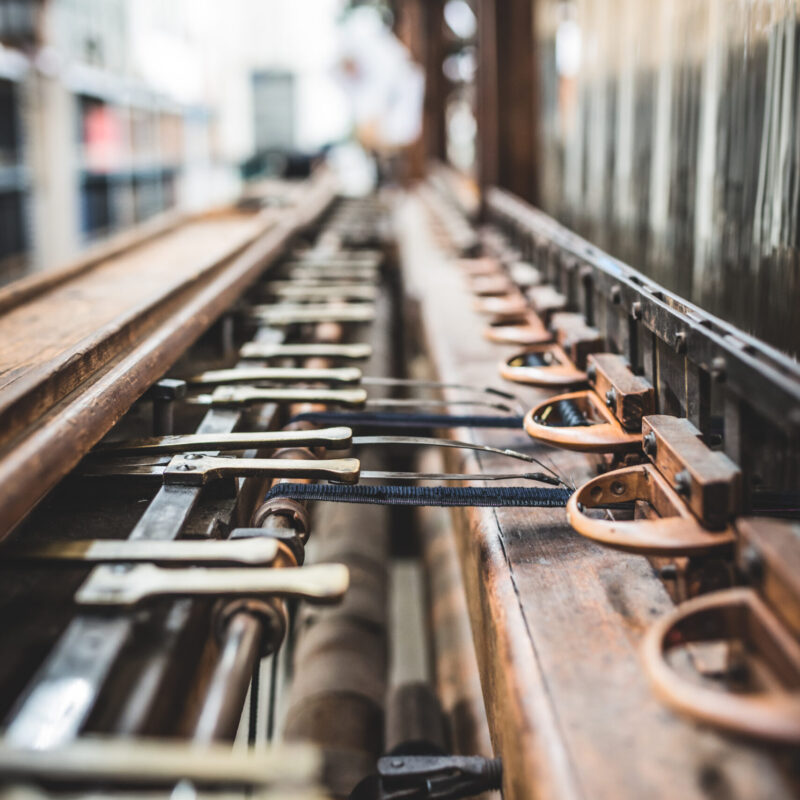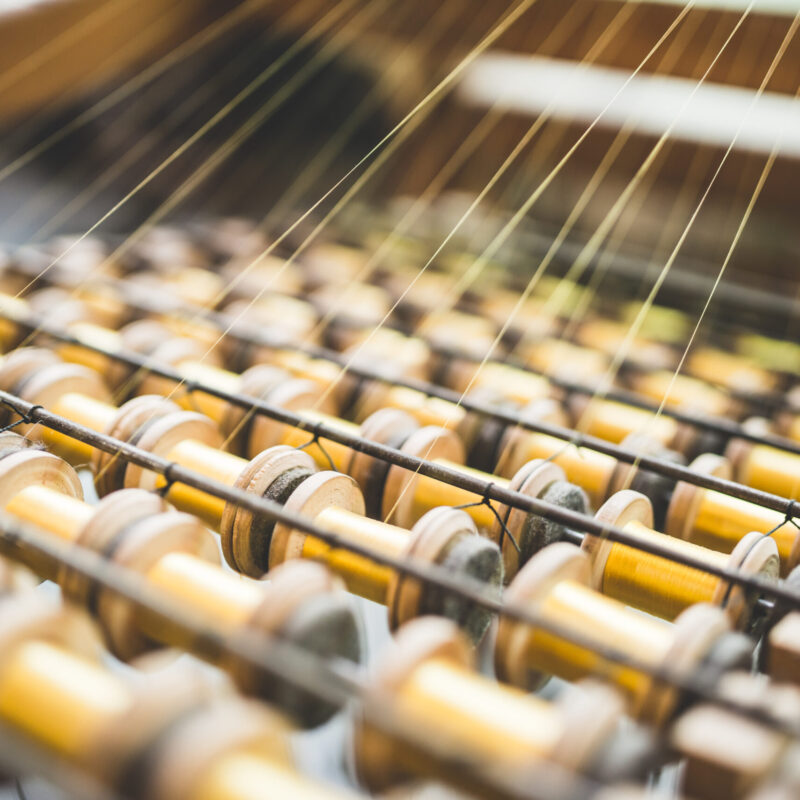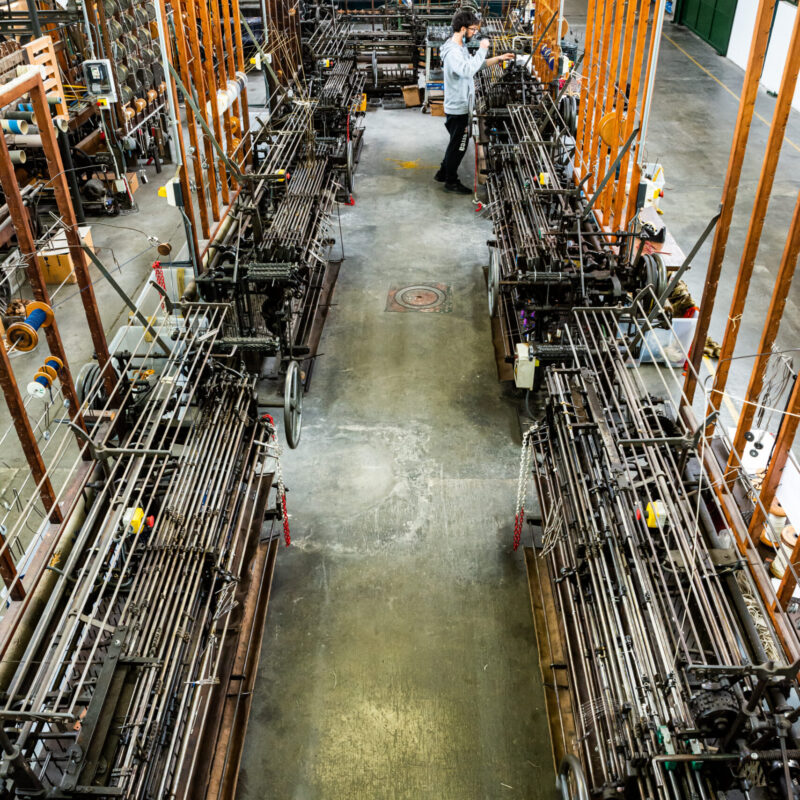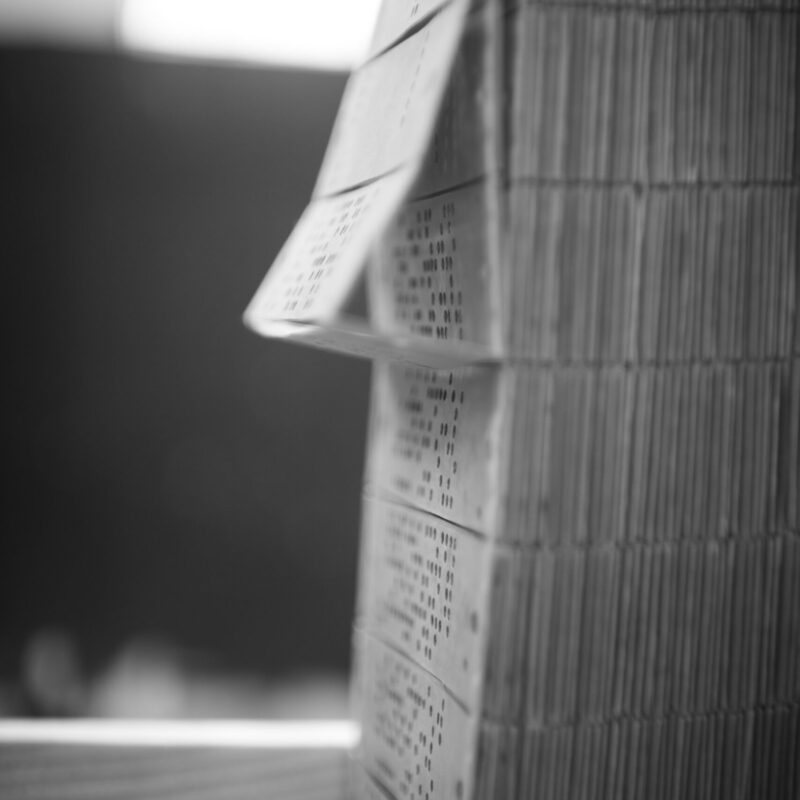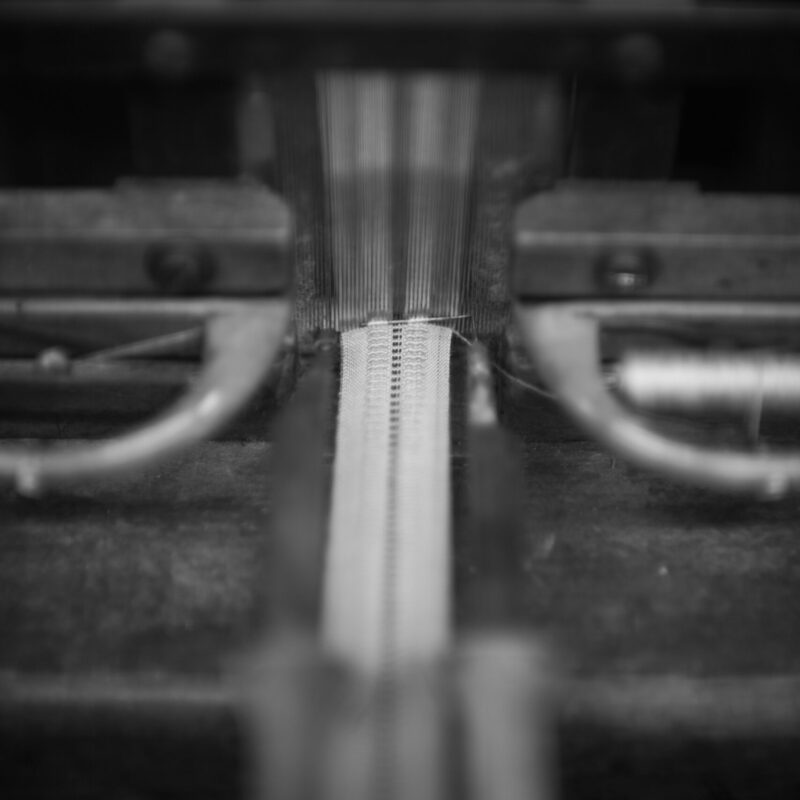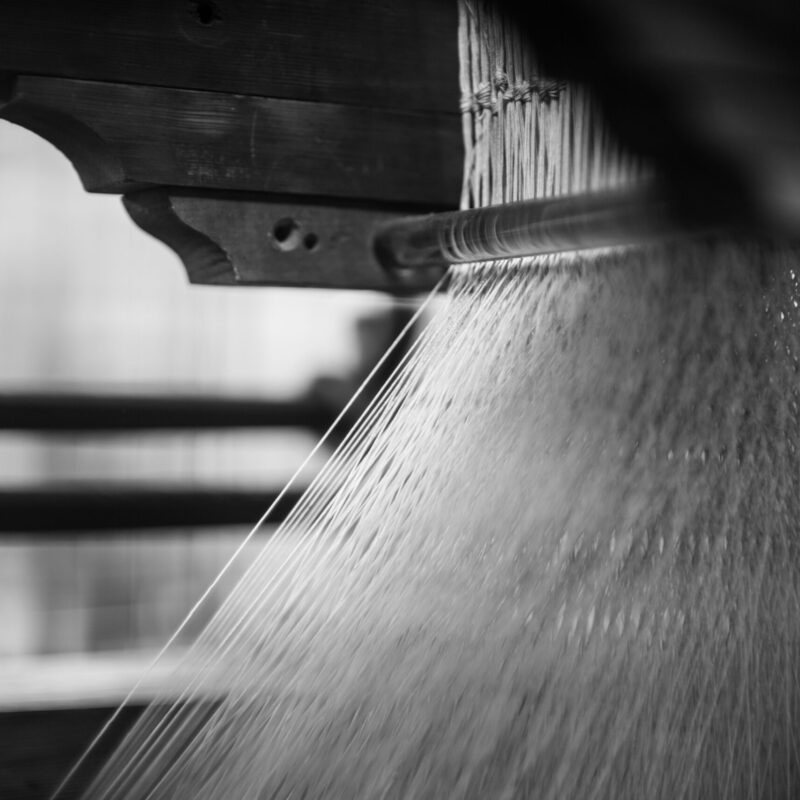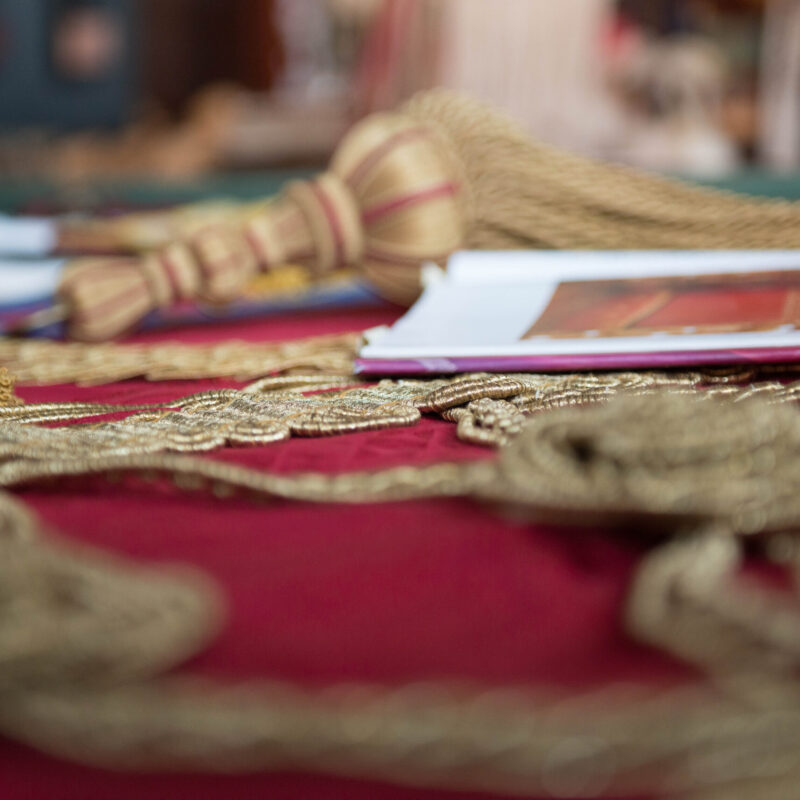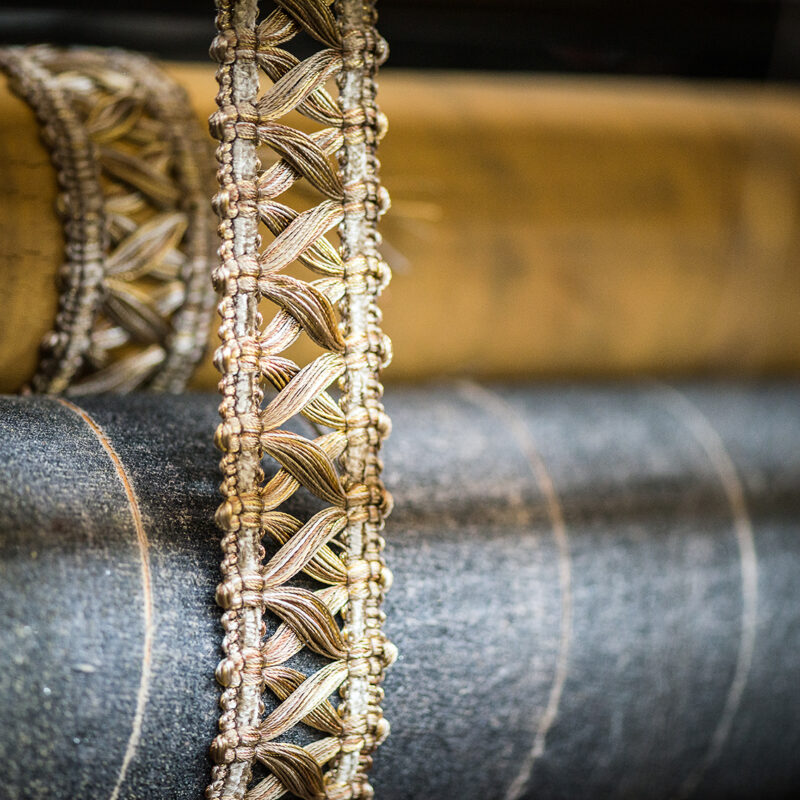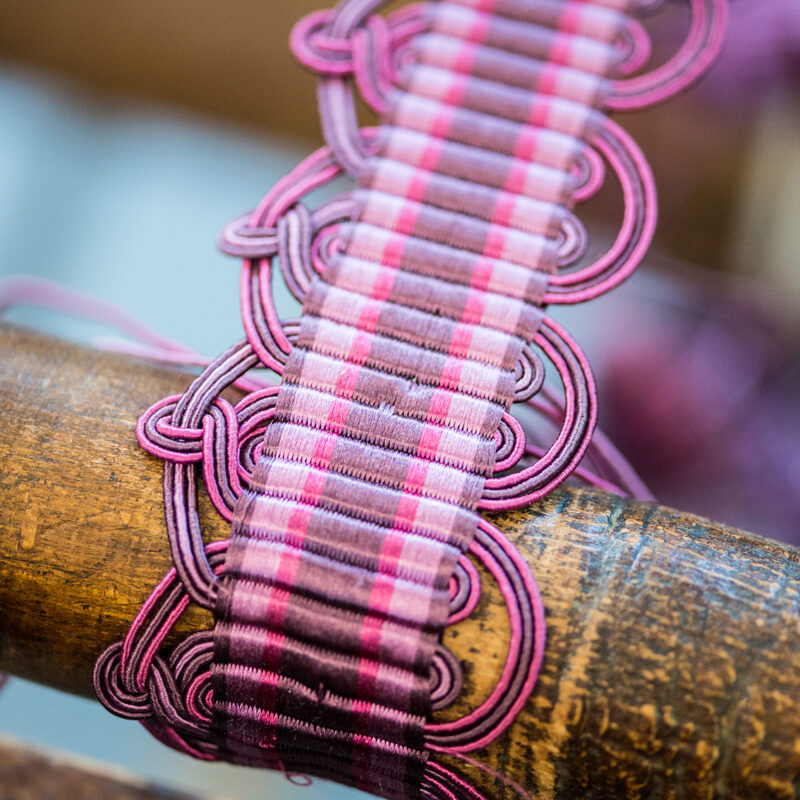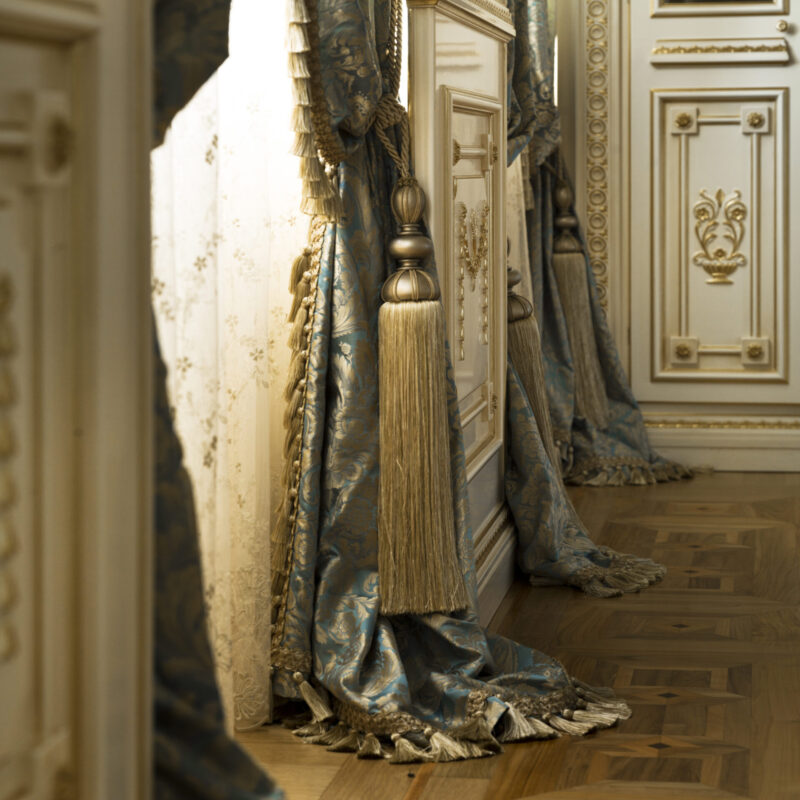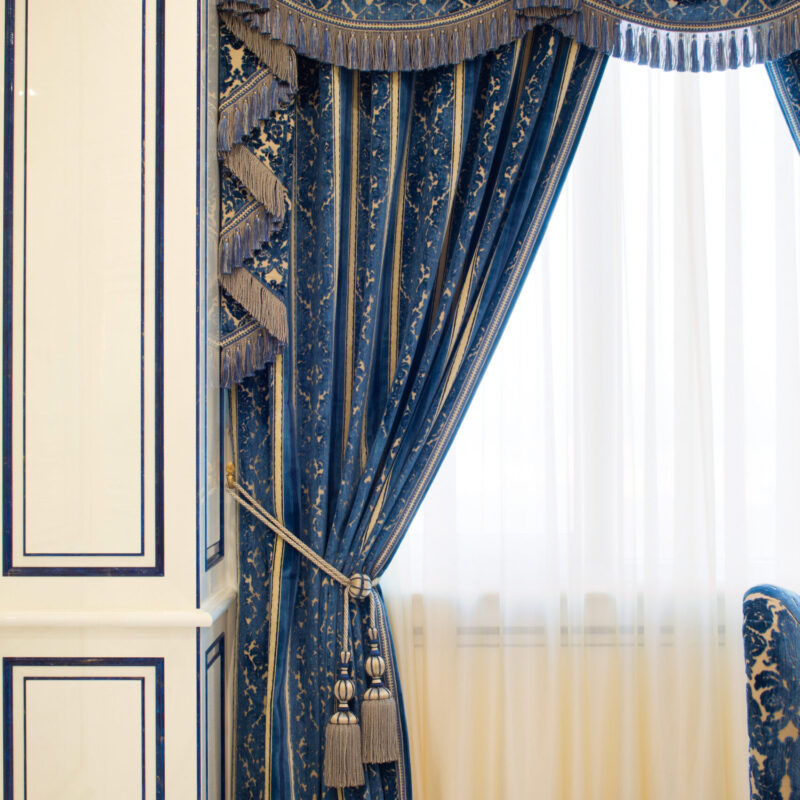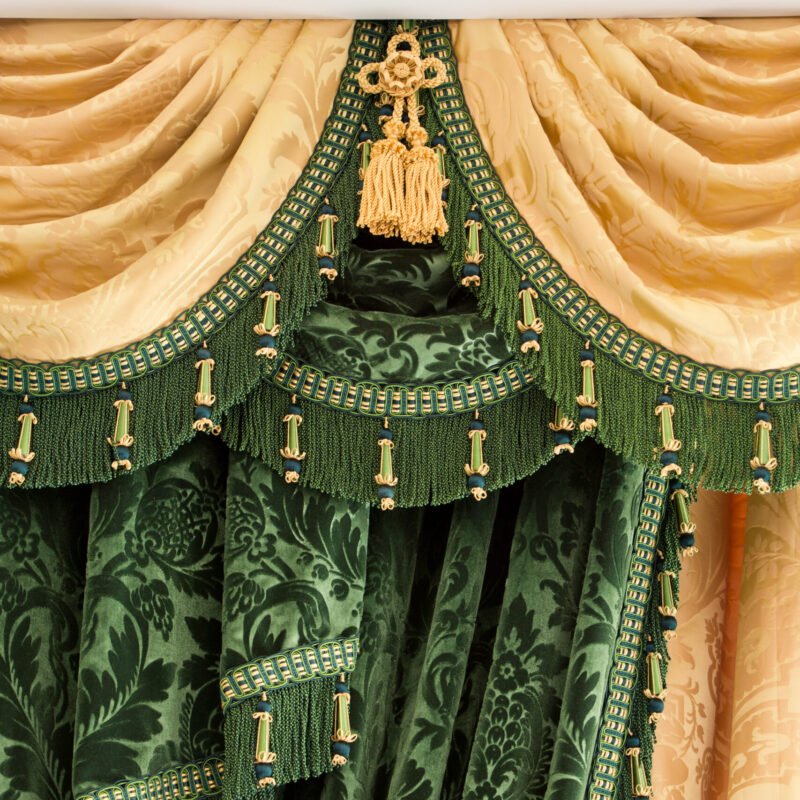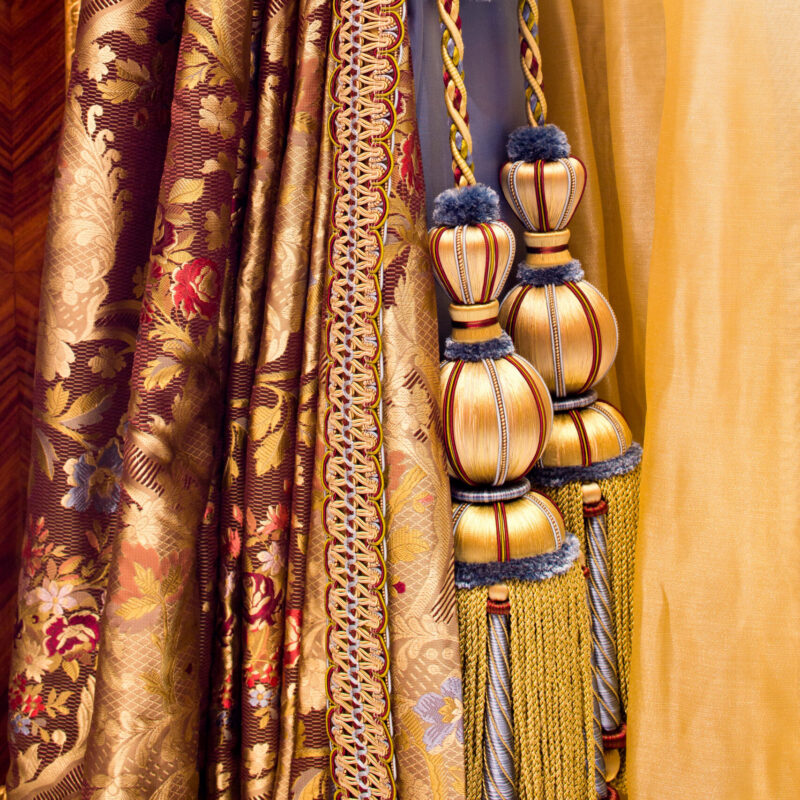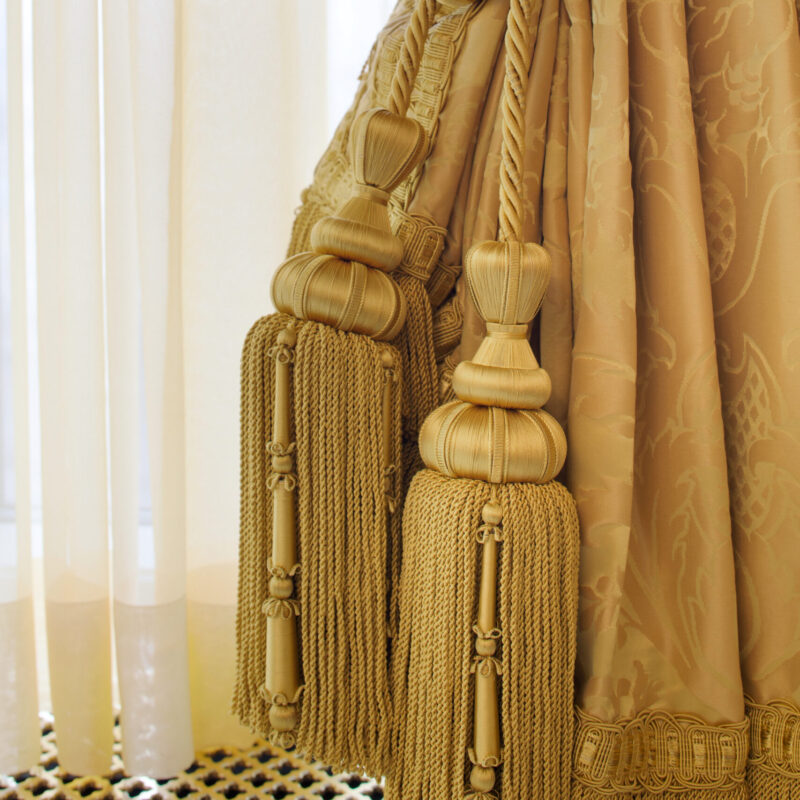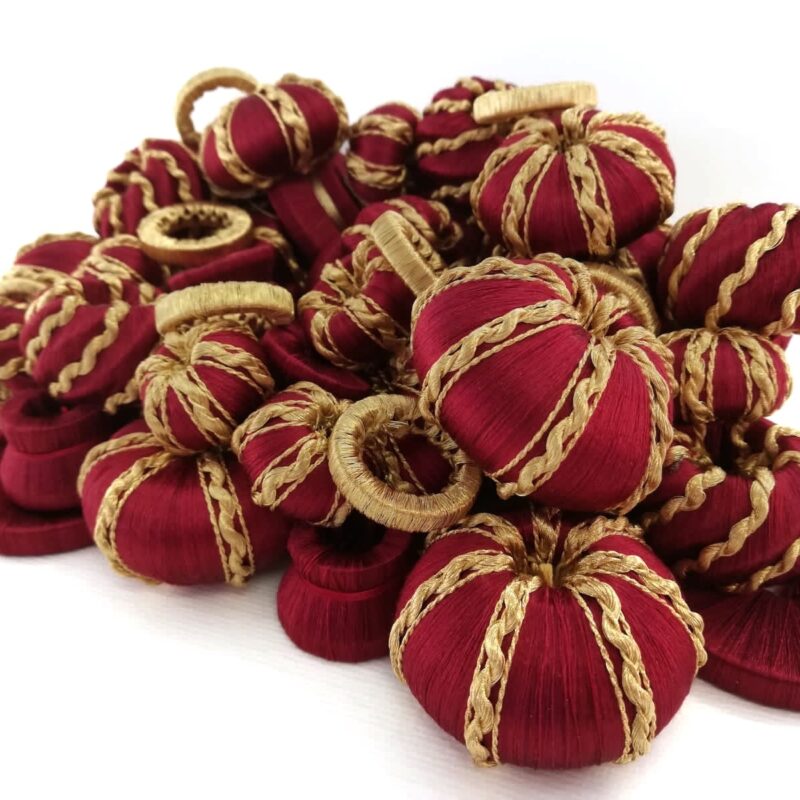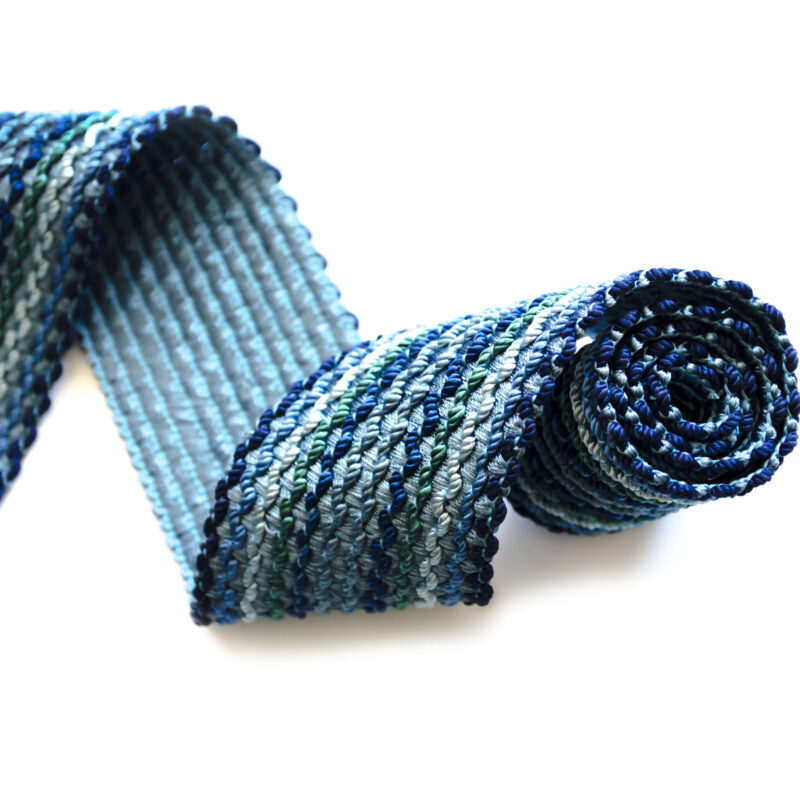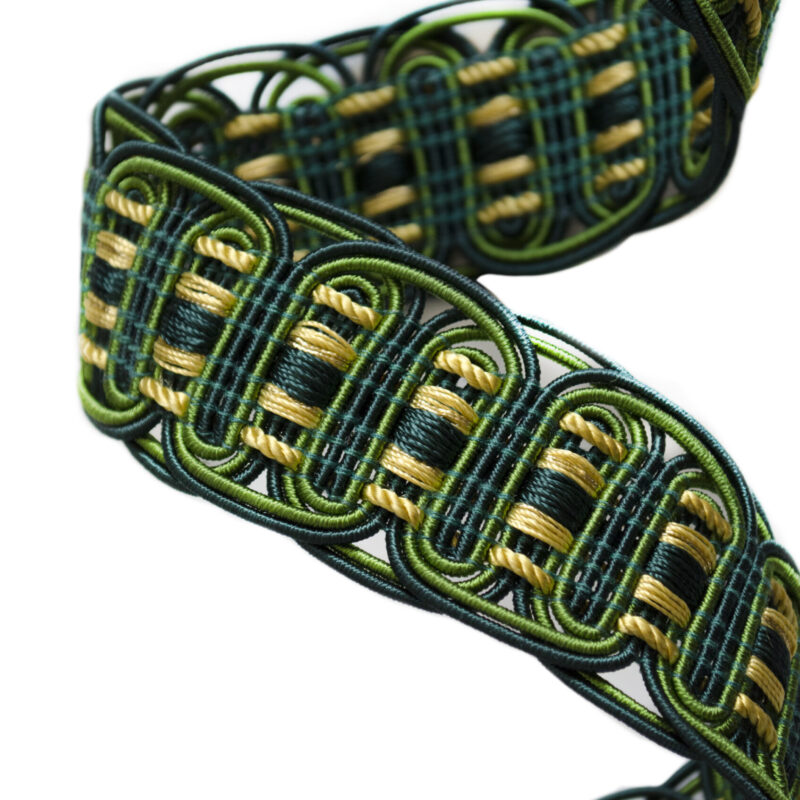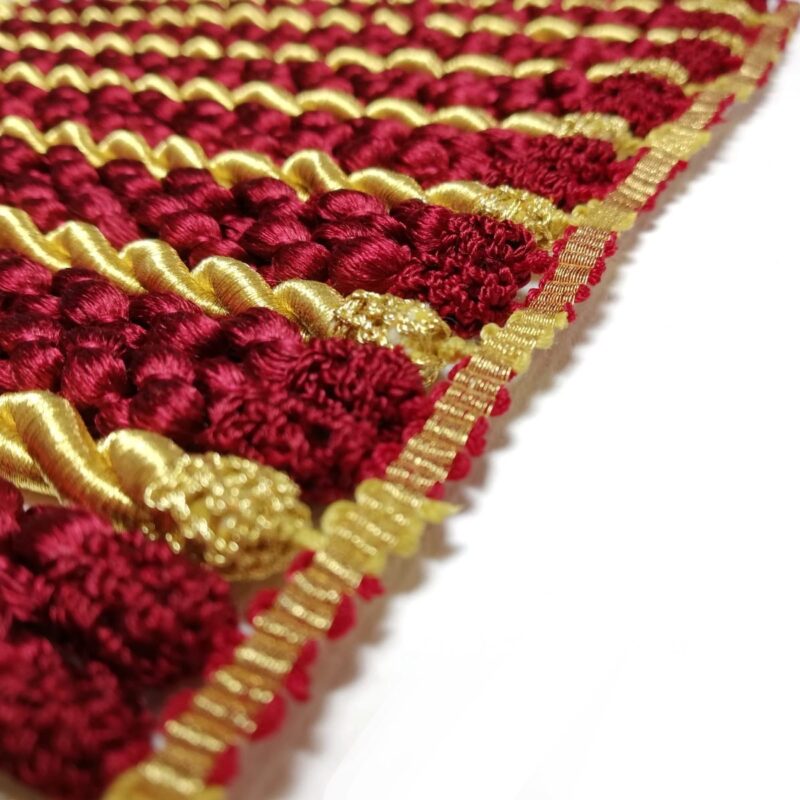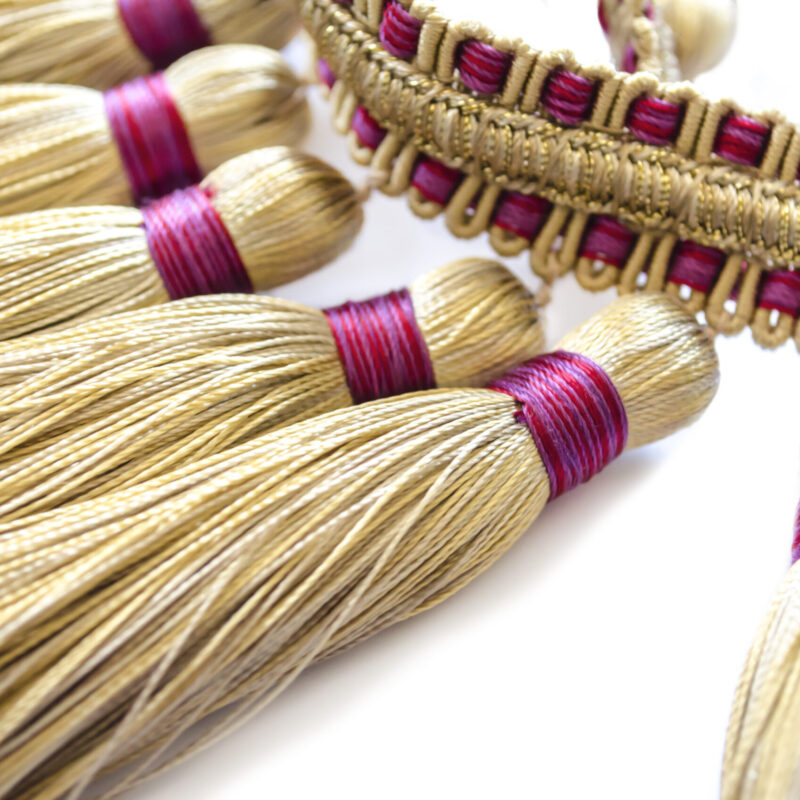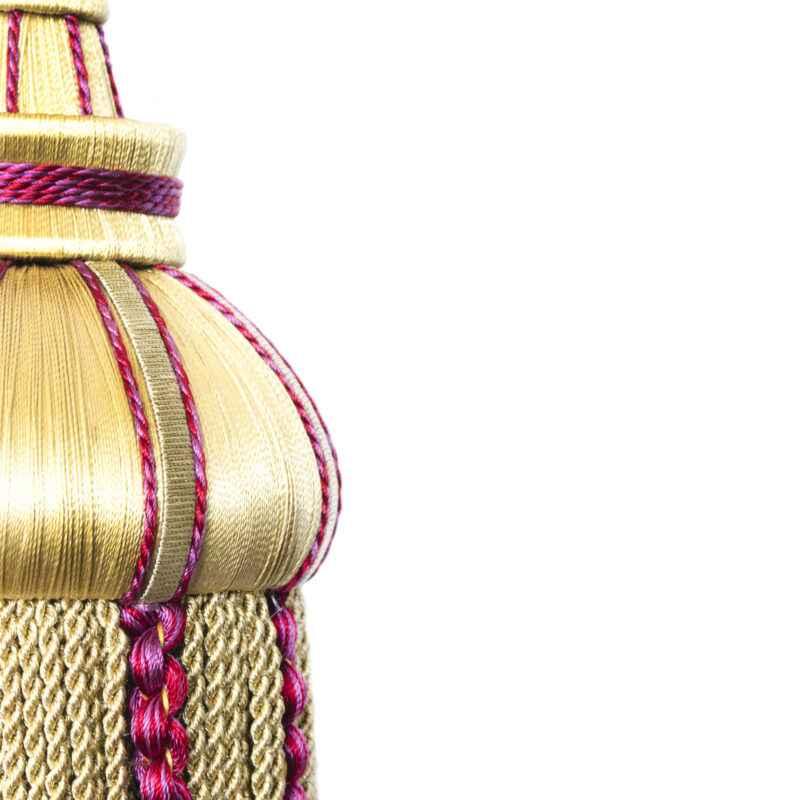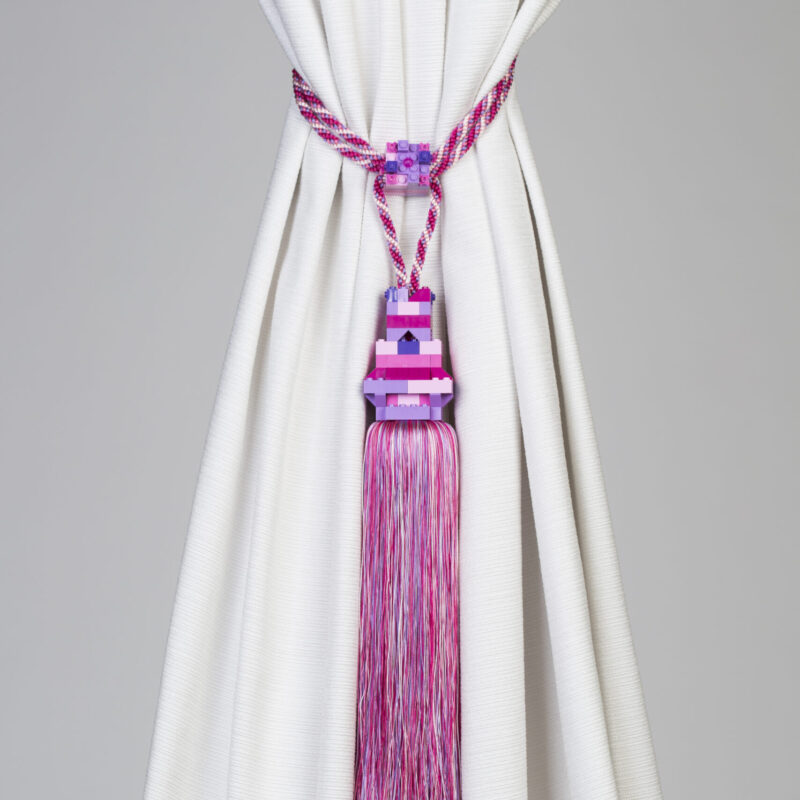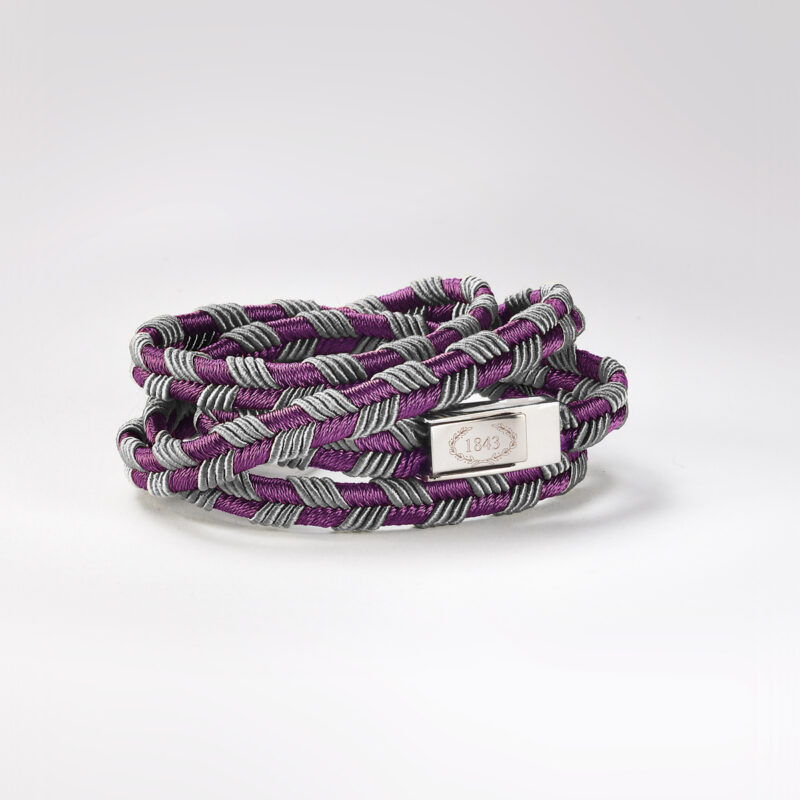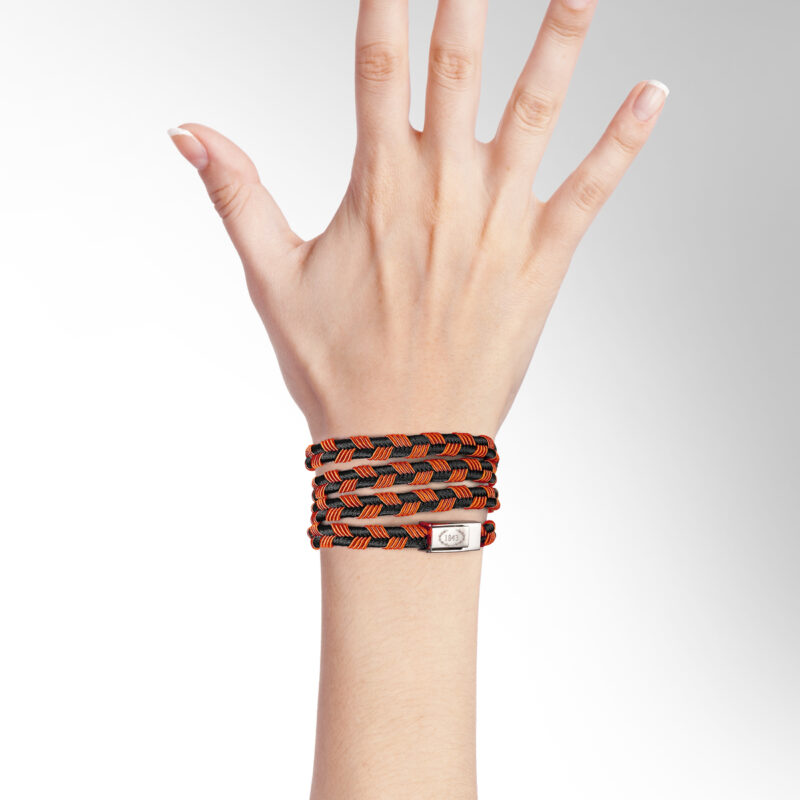Antica Fabbrica Passamanerie Massia Vittorio: experience and innovation handed down by a purple thread
A short video to tell you the story of the Massia family, active in the world of the textile industry since 1685, then transformed from 1843 into the sole creation of textile “details” such as weaves, ropes, frogs, fringes and bows; variously used as clothing and / or furnishing accessories. The trimmings have adorned castles, palaces, theaters and noble residences throughout Italy and beyond.
The secrets of this art, handed down from father to son for six generations, now make it possible to create new shapes and applications of trimmings, leading to the creation of unique accessories and objects. History and tradition are therefore placed in a visionary way within the contemporary artistic world, interacting with the furniture, fashion, design and textile art sectors.
The history of this company has been accompanied by an element, a color, an index of guarantee and professionalism: purple. In the world of weavers, in fact, tradition has it that every shop and manufacture has its own signature of recognition. One or more weft passes were then made in the selvedge in order to distinguish, through the color, the origin and therefore the quality of the product.
Sitography: https://www.massiavittorio1843.it/
©2021 Antica Fabbrica Passamanerie Massia Vittorio 1843 is a registered trademark of MV1843 srl
Hello everyone, I’m Max Massia, owner of this family business. I am the sixth generation that makes trimmings in Turin; the Massias were born in Turin in 1685 as a company dedicated to weaving, managed by father-son. My great great great grandfather in 1843 converts weaving into trimmings. Take into account that in Turin at that time there were 200 trimmings factories as, being the capital of the kingdom of the Savoy, there was a crossroads of important personalities, therefore the nobles and the army with related carriages, palaces and equipment; trimmings were therefore consumer goods widely used in those years. Obviously, as history has changed, the company has also changed: in 1880 we open the shop in the historic center of Turin that we still have today; the furniture is the original one and it is the last Italian trimmings shop.
Then various steps: in 1944 the company was razed to the ground during the Second World War, which meant that my grandfather in the economic boom started more from a commercial point of view, therefore with the purchase and sale of trimmings for Italy. . In the 1980s, my father took over the old machinery and the old processes to go back, let’s say, to specialize again in historical trimmings. In 2000 I joined the company that has its current headquarters in Pianezza (To), with the weaving machinery you see. What is interesting was the expansion of production in various sectors, therefore not only the restoration but also the furniture, contemporary art, fashion. The project we did with Simon Starling for the Franco Noero Gallery in Turin was interesting in which we basically worked on the subject of Jacquard cartoons, of the binary code and therefore of the first computer, going to convert and combine the music so I play (or don’t sound) with the colors of the RGB variant. So basically the sound is converted by the weaving machine. We also collaborated with Atelier Biagetti in Milan for the works made in Turin and then with designs such as Cristina Celestino and Sara Ricciardi.
What are the expectations for the future?
There are many expectations. Even a difficult moment like this has taught us that perhaps before we ran too fast with respect to the results that could be obtained; it is important to do a little more selection within your customers and go and look for targeted jobs that basically bring satisfaction. It is obvious, being a company you have to look at the fact of standing so you have to try to understand what the new challenges will be from a commercial point of view, especially at an international level, and I believe that perhaps, today more than ever, if yes he is able to do his job in the best possible way, with the right humility and without going to make too many pindalic flights but without limiting himself exclusively to traditional work, there can be good satisfactions.

